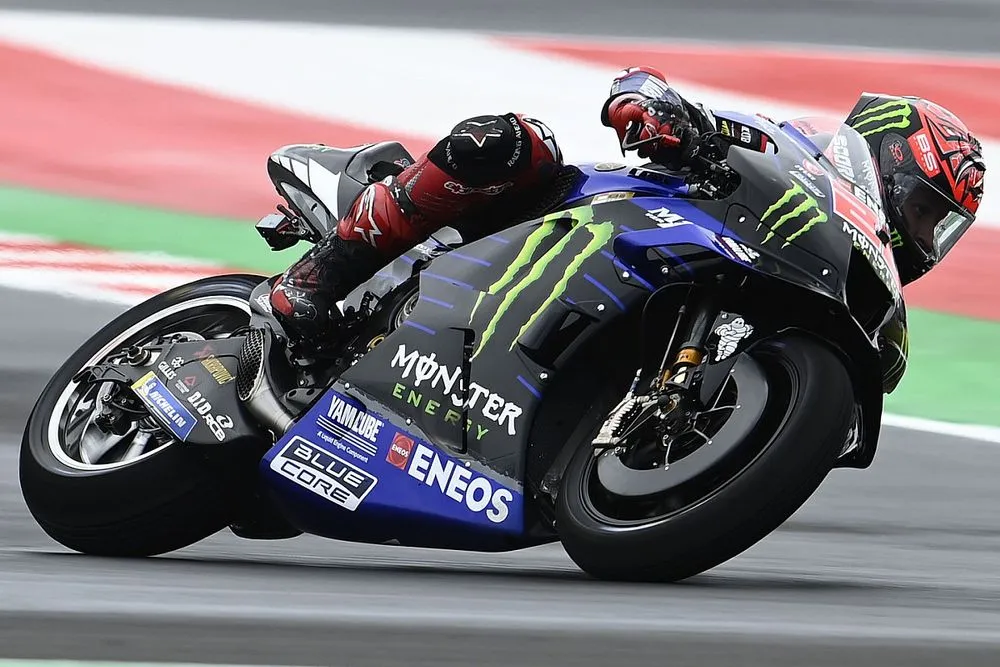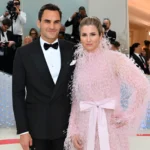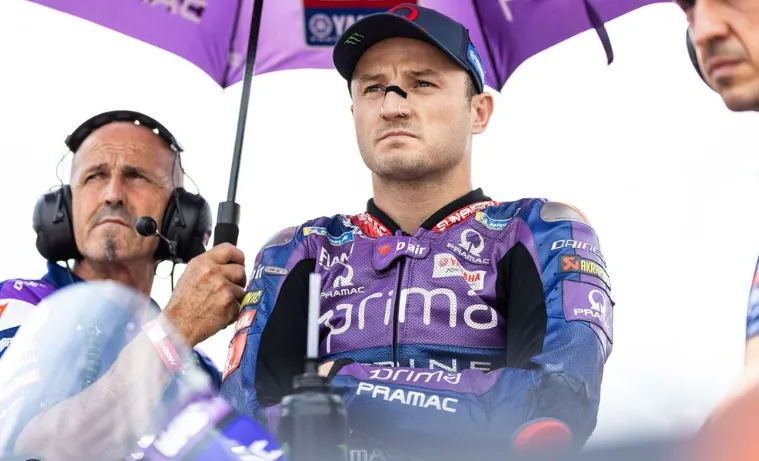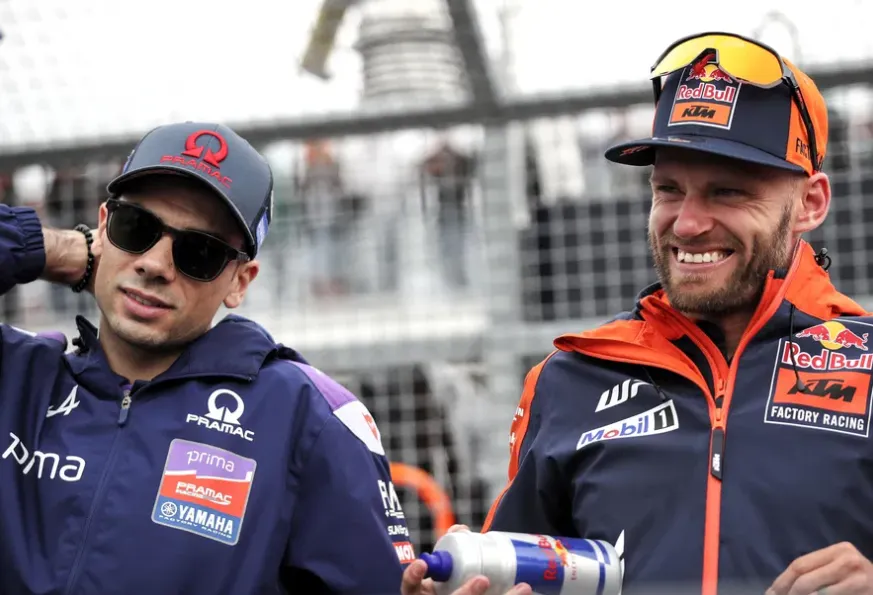

MotoGP shocked by Fabio Quartararo’s special “disconnects brain” performance
Fabio Quartararo has never been a stranger to the limits of a motorcycle. The French MotoGP star, who first rode at the age of just four, admits he has crashed “at least 150 times” in his career — maybe even more. Far from breaking his spirit, those crashes have shaped one of the most unique and dangerous strengths in modern motorcycle racing: his ability to switch off fear completely when it matters most.
The 2021 MotoGP World Champion is well known for his qualifying heroics, regularly putting his Yamaha M1 at the sharp end of the grid, even when race pace suggests a different story. This special skill, which Quartararo describes as “disconnecting the brain”, has stunned fans and rivals alike — but it also hides a deeper challenge that could shape his future in the sport.
A Childhood of Crashes Shaping a Champion
From the very start of his racing life, Fabio Quartararo was accustomed to picking himself up off the tarmac. He recalls those early days vividly:
“I don’t know how many falls I’ve had throughout my life, because I’ve been riding a motorcycle since I was four years old, but you fall, you fall, you fall,” Quartararo told AS. “I suppose about 150, but maybe more. As a child, the first time I rolled in water, I fell three times. And you go out again, and you go out. My father then had to take the motorcycle to be repaired because it was destroyed.”
This relentless cycle of fall, repair, repeat did more than build resilience — it created a racer unafraid of the risks involved in pushing to the absolute limit. It also helped him develop an instinctive feel for the edge of grip, a skill that now defines his style in MotoGP qualifying.

The Secret Weapon: “Disconnecting the Brain” in Qualifying
While race day brings its own strategy and endurance battles, qualifying is where Fabio Quartararo transforms into a completely different beast. Over the years, his experience with crashes has made him fearless in time-attack mode.
“In qualifying, which is my strong point, my brain shuts down. I disconnect it,” Quartararo explained. “When you leave the box for the out lap, I’m nervous, but as soon as I hit the last corner before the fast lap, it all disappears — like when your head or belly hurts and then suddenly it’s gone.”
This mental switch has produced staggering results. In 2019, his rookie year, Quartararo claimed six pole positions. Since then, he has added 14 more poles, with four already in the current season. His single-lap pace remains one of the deadliest weapons in MotoGP, often giving Yamaha a front-row start even when the bike’s overall race pace lags behind.
The “Sane Madness” That Scares Rivals
Quartararo jokingly calls himself a “sane madman”, fully aware that what he does in qualifying isn’t normal. On the limit of traction, skimming curbs, and taking racing lines that defy logic, his style in qualifying leaves spectators breathless and rivals scratching their heads.
“When the lap is done, you realize you’re crazy,” he admits. “But a sane crazy — because there’s method in it.”
Riders like Francesco Bagnaia and Jorge Martin have openly acknowledged that Quartararo’s qualifying laps can be intimidating, especially when he extracts more from the Yamaha than seems possible. This blend of instinct, fearlessness, and calculated risk makes him one of the most dangerous riders over a single lap.
Yamaha’s Big Problem: The Race Pace Decline
As impressive as Fabio Quartararo’s qualifying runs are, his Sunday performances often tell a different story. While he starts near the front, the Yamaha M1 struggles to maintain competitiveness over full race distance. Quartararo frequently slips back into the pack, unable to match the top speeds and acceleration of rival manufacturers like Ducati, Aprilia, and KTM.
The team’s big engineering project — developing a V4 engine — promises to address these deficits, but that’s still a long-term solution. For the 2025 MotoGP season, Quartararo must work with the bike he has, which remains down on horsepower compared to the competition.
For a rider capable of extracting every ounce of performance over one lap, it’s a frustrating reality that his hard-earned pole positions often turn into damage-limitation rides on race day.
The Austrian GP and the Urgent Need for Change
Heading into the Austrian MotoGP, the Red Bull Ring presents one of the toughest challenges for Yamaha. Long straights and heavy braking zones reward top-end speed and engine power — areas where Yamaha is currently weakest.
Even if Quartararo delivers another stunning qualifying lap, the reality is that race day could turn into a defensive battle, with the Frenchman forced to fend off faster bikes on the straights. Unless Yamaha finds short-term fixes, his special qualifying talent could be wasted against rivals with superior machinery.
The Value of Quartararo in the MotoGP Paddock
Despite Yamaha’s struggles, Fabio Quartararo remains one of the most valuable names in MotoGP. His reputation as a fearless competitor, a fan favorite, and a marketing powerhouse ensures that other teams are closely monitoring his situation.
If Yamaha cannot deliver a race-winning package, the risk of losing their star rider increases. Quartararo’s contract discussions have already been a talking point, and his willingness to push beyond the limit makes him a tempting target for any manufacturer aiming for instant success.
Why “Disconnecting the Brain” Works
From a psychological perspective, what Fabio Quartararo does in qualifying is fascinating. By removing the conscious thought process and relying purely on instinct, he eliminates hesitation — a critical factor when operating on the edge of grip and control.
This state of flow allows him to react faster, commit more fully to corner entries, and hold throttle openings that other riders might instinctively roll off. It’s a risky approach, but one that suits a rider who has learned from hundreds of crashes that fear is often the biggest barrier to speed.

Sports psychologists compare this to “automatic mode” in elite athletes — a state where training and muscle memory take over, producing peak performance without the interference of overthinking.
The Fine Line Between Genius and Danger
While Quartararo’s fearlessness inspires fans, it also raises questions about longevity. Constantly riding on the limit increases the risk of injury, and in a sport where split-second mistakes can have huge consequences, “disconnecting the brain” can be both a blessing and a curse.
The challenge for Quartararo will be balancing this aggressive approach with long-term career management. As his body endures more seasons at the top level, avoiding unnecessary risks could become just as important as finding raw speed.
Looking Ahead
The coming races will test both Fabio Quartararo and Yamaha. His ability to dominate qualifying sessions is unquestioned, but without matching race pace, the poles won’t translate into victories. The Austrian GP will serve as another high-profile case study of the gap between qualifying brilliance and Sunday struggles.
Still, one thing is certain — when Quartararo rolls out of the pits on Saturday, he will once again flip the mental switch, silence the noise, and chase another lap of pure perfection. Whether or not Yamaha can match that intensity on race day remains the biggest question in the 2025 MotoGP season.


















